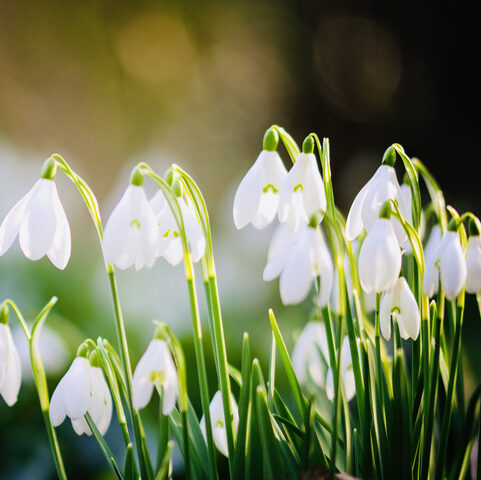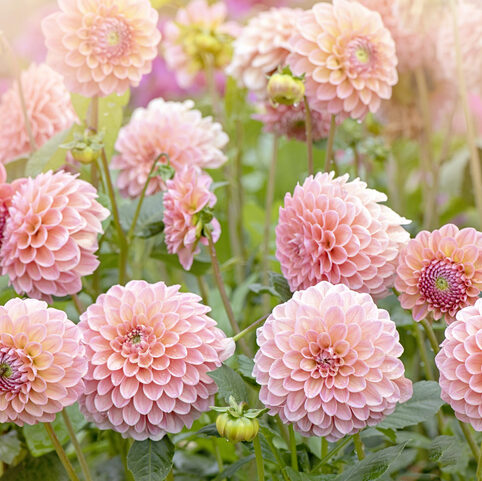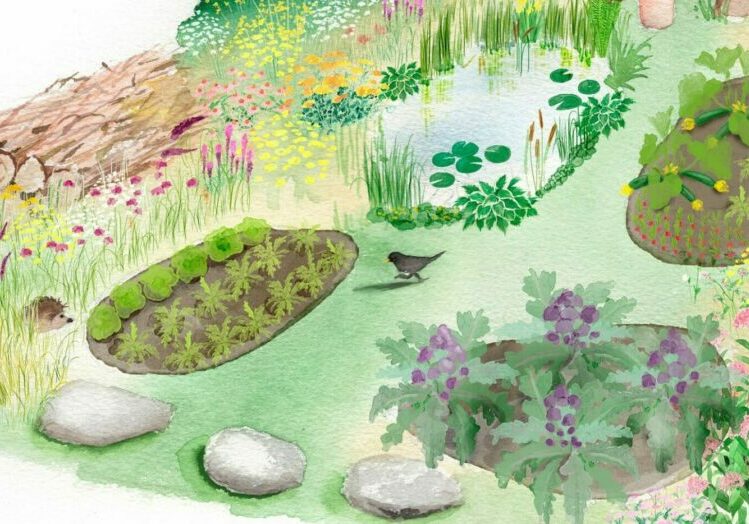Imagine living in a desert with barely any food, water or shelter. That’s what much of the British countryside is like for wild pollinators today. Our bees, butterflies, moths, hoverflies, wasps and pollinating beetles are in trouble.
Over the past 50 years, they’ve experienced staggering declines. About 23 species have become extinct since 1850, and the ranges of many other species have shrunk until they are surviving only in small isolated patches of suitable habitat.
The threats our pollinators face are many and varied. Habitat loss, fragmentation and degradation are key factors driving bee declines. A staggering 97% of all flower-rich grasslands in England – an area the size of Wales – has been lost since the 1930s.
Modern farming practices, including the use of pesticides and grubbing out hedgerows, environmental pollution, climate change, non-native invasive species, diseases and pests have also had an impact.
As well as being widely loved, bees play a vital role as pollinators. In addition to wildflowers and trees, bees and other insects help to pollinate our food crops. It’s estimated these pollination services are worth £600 million to the UK’s crops every year – and, of course, they do this free of charge.
A third of the food we eat relies on bees for pollination and they are essential for our survival. We all need bees – and they need our help.
The creation of a network of flower-rich habitats across the UK is vital for pollinators and our own future food security. Together, our gardens take up more space than all of the UK’s nature reserves put together. So by growing a mix of flowering plants, we can all help our pollinators find enough food.
You can restore nature on your own patch, whether you have a large garden or a small windowbox, and do your bit to give struggling species such as bees a huge helping hand.
Our tips, below, will make any green space into a haven for pollinators.

Extend the growing season
Grow flowers from March to November, longer if possible (especially if you live in the south). Start the year with bulbs such as crocuses, snowdrops and aconites, and end it with winter-flowering clematis and honeysuckle.

Try lots of varieties
Grow a wide range of plants with different-shaped flowers. Grow daisy-like blooms such as marguerite and chamomile, tubular flowers such as honeysuckle and foxglove, bowl-shaped blooms such as cranesbill and poppies, and flat, plate-like fennel and Verbena bonariensis.

Keep it simple
Select single bloom over double-bloom flowers. Some varieties of dahlias and roses, for example, have extra petals. But they’re like a closed shop for pollinators, which can’t reach their pollen and nectar.

Ditch the chemicals
Avoid using pesticides. The use of neonicotinoids has been partially banned, but these chemicals are still used in horticulture, including bug sprays. Some plants purchased from garden centres contain neonicotinoids, so choose carefully where you buy plants. You can also make your own natural spray out of neem oil, which contains 50 insecticides.

Buy organic
Organic food is grown without synthetic fertilisers and pesticides, so pollinators can feed without being exposed to harmful chemicals. What’s more, organic farms tend to be more nature friendly, so you’re not only supporting bees but whole ecosystems.

Make wildlife welcome
Make bees and other beneficial minibeasts more welcome in your garden by providing an insect hotel. Include lengths of bamboo, twigs and stems, grass seed heads, pine cones, leaves and lichen and remember to clean it out every year in winter.
• This is an edited version of an article that originally appeared in WWF Action magazine in 2019.
More to explore

A wild future for the Dales
From windswept peak to valley floor, a beacon of hope for people and nature is emerging in the heart of the Yorkshire Dales. We’ve embarked on a visionary project to restore this iconic landscape and fight climate change

